Bluegrass competition in winter wheat can result in yield losses of up to 50%. We reviewed current research to provide
recommendations for reliable control of annual and roughstalk bluegrass in Ontario.
The simple answer
| For best control of | Product | Application Timing | Notes |
| Annual bluegrass | Focus (pyroxasulfone) | pre-emergent | prior to weed emergence |
| Annual bluegrass | Simplicity GoDRI (pyroxsulam) | post-emergent | early spring when <10 cm tall. |
| Roughstalk bluegrass | Axial (pinoxaden) | post-emergent | early spring when <10 cm tall. |
| Roughstalk bluegrass | Simplicity GoDRI (pyroxsulam) | post-emergent | early spring when <10 cm tall. |
| Roughstalk bluegrass | Varro (thiencarbazone) | post-emergent | early spring when <10 cm tall. |
A little more information
Research done by Michigan State University’s Dr. Christy Sprague has shown that yield losses of up to 50% can occur from bluegrass competition in winter wheat. Bluegrass species often head at the same time as winter wheat, and could intercept and reduce the amount of fusarium head blight fungicide reaching the grain head (Figure 1). These competitive grassy weeds emerge primarily in the fall but also in early spring. Plants smaller than 10 cm in height are easier to control with herbicides. Early spring applications provide better control than fall applications. Some bluegrass seedlings – that are missed by fall applications – emerge in early spring. Both fall and early spring applications provide better control than late spring applications.

Figure 1. Roughstalk bluegrass infesting a winter wheat field during anthesis.

The full story
Building on Dr. Sprague’s research, an on-farm research trial evaluated five different herbicides – three are currently available in Ontario and one has a 20% lower use rate compared to its U.S. counterpart (Table 2). The field site contained primarily roughstalk bluegrass. Herbicides were applied when bluegrass was 5-7.5 cm tall (Figure 2) and the winter wheat crop was just at stem elongation. The rest of the field was sprayed one month later when bluegrass was 20-30 cm tall.
Table 2. Herbicides applied to roughstalk bluegrass in winter wheat
| Herbicide (active ingredient and concentration) | Rate |
| Simplicity GoDRI (pyroxsulam – 21.5%) + Merge – CAN rate | 28 g/acre + 400 mL/ac |
| Simplicity GoDRI (pyroxsulam – 21.5%) + Merge – U.S. rate | 35 g/acre + 400 mL/ac |
| Axial (pinoxaden – 50 g/L) | 500 mL/ac |
| Osprey* (mesosulfuron-methyl – 4.5%) + Agral 90 | 135 g/ac + 0.5% v/v |
| Varro (thiencarbazone-methyl – 10 g/L) + Agral 90 | 200 mL/ac + 0.25% v/v |
| Sencor 480** (metribuzin – 480 g/L) | 450 mL/ac |
** Only labelled for use on winter wheat in Western Canada
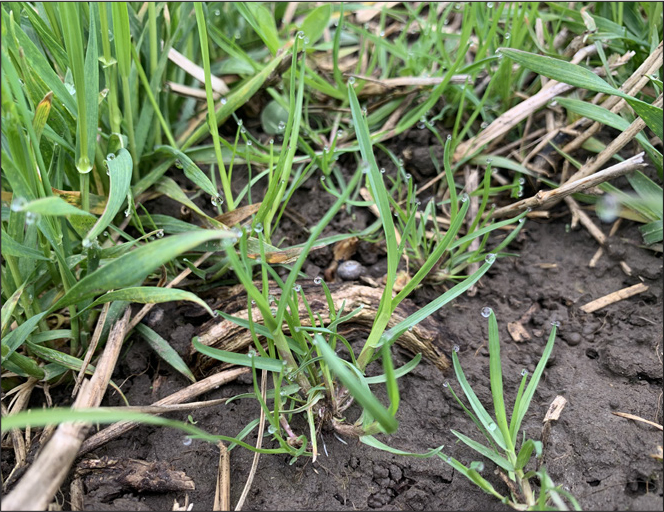
Figure 2. Roughstalk bluegrass was <10 cm tall at time of herbicide applications.
Key learnings
Axial, Simplicity GoDRI and Varro provided excellent control of roughstalk bluegrass that was less than 10 cm tall at application. (Table 3, Figures 3 & 4)
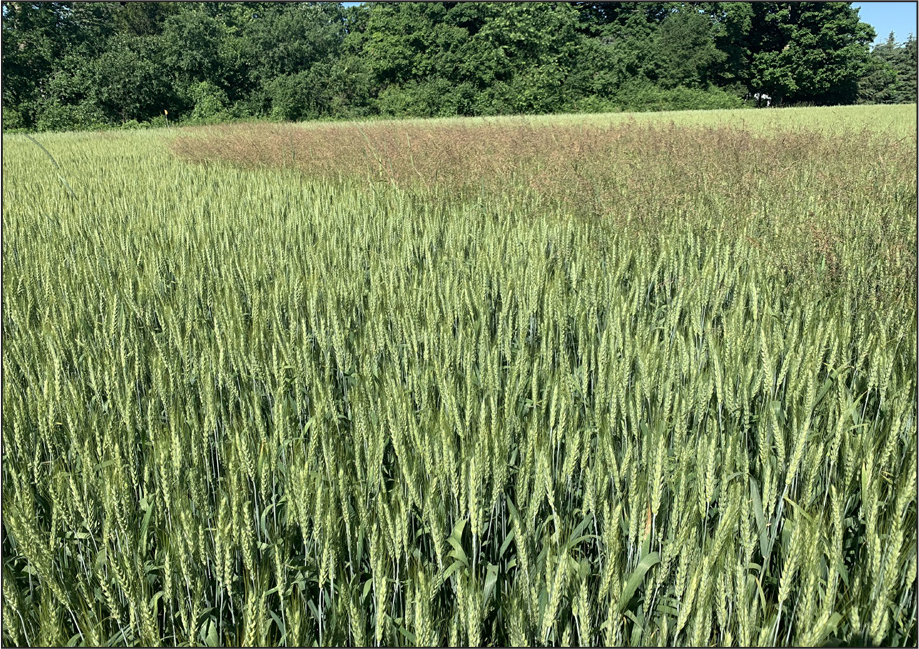
Figure 3. Axial, Simplicity GoDRI and Varro herbicides delivered excellent control of roughstalk bluegrass compared to unsprayed check.
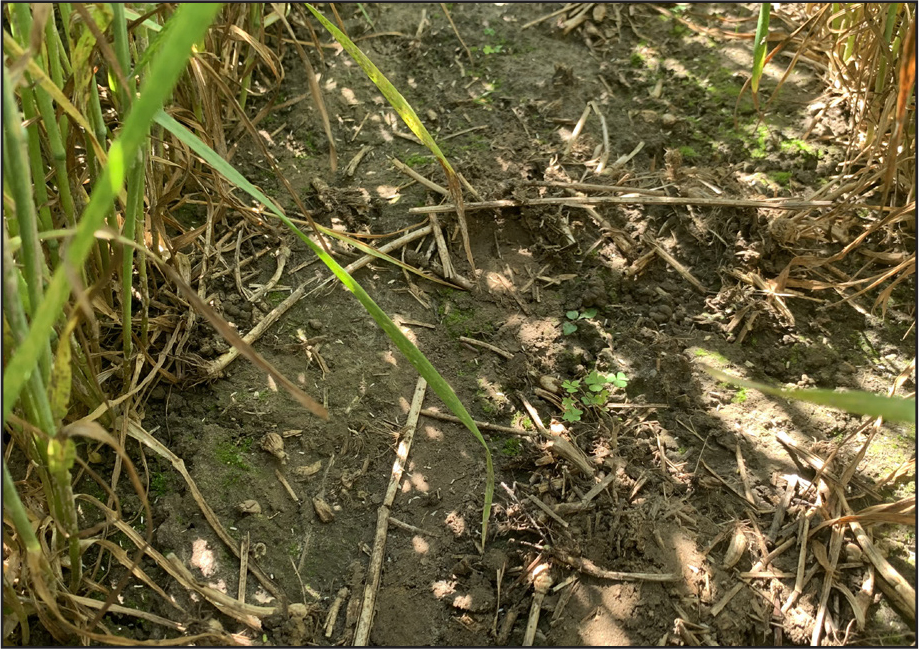
Figure 4. Roughstalk bluegrass under the winter wheat canopy at 48 days after an April application made to plants <10 cm tall.
Table 3. Herbicide control of roughstalk bluegrass
| Herbicide | Date applied, weed size | Control– 56 DAA* |
| Simplicity GoDRI + Merge – CAN rate | April 10 (<10 cm tall) | 99% |
| Simplicity GoDRI + Merge – CAN rate | May 14 (20-30 cm tall) | 70% |
| Simplicity GoDRI + Merge – U.S. rate | April 10 (<10 cm tall | 99% |
| Axial | April 10 (<10 cm tall | 99% |
| Osprey** + Agral 90 | April 10 (<10 cm tall | 99% |
| Varro + Agral 90 | April 10 (<10 cm tall | 99% |
| Sencor 480*** | April 10 (<10 cm tall | 99% |
**Only available in the U.S.
*** Only labelled for use on winter wheat in Western Canada
Delaying herbicide applications into May, when bluegrass was greater than 20 cm tall, reduced control but did keep bluegrass from heading above the wheat canopy (Figure 5 and 6 aerial). However, there was a considerable amount of roughstalk bluegrass at the bottom of the wheat canopy that began to grow and set seed after harvest. In contrast, the mid-April applications to small roughstalk bluegrass eliminated the majority of plants, and fields were essentially bluegrass free after harvest (Figure 7).
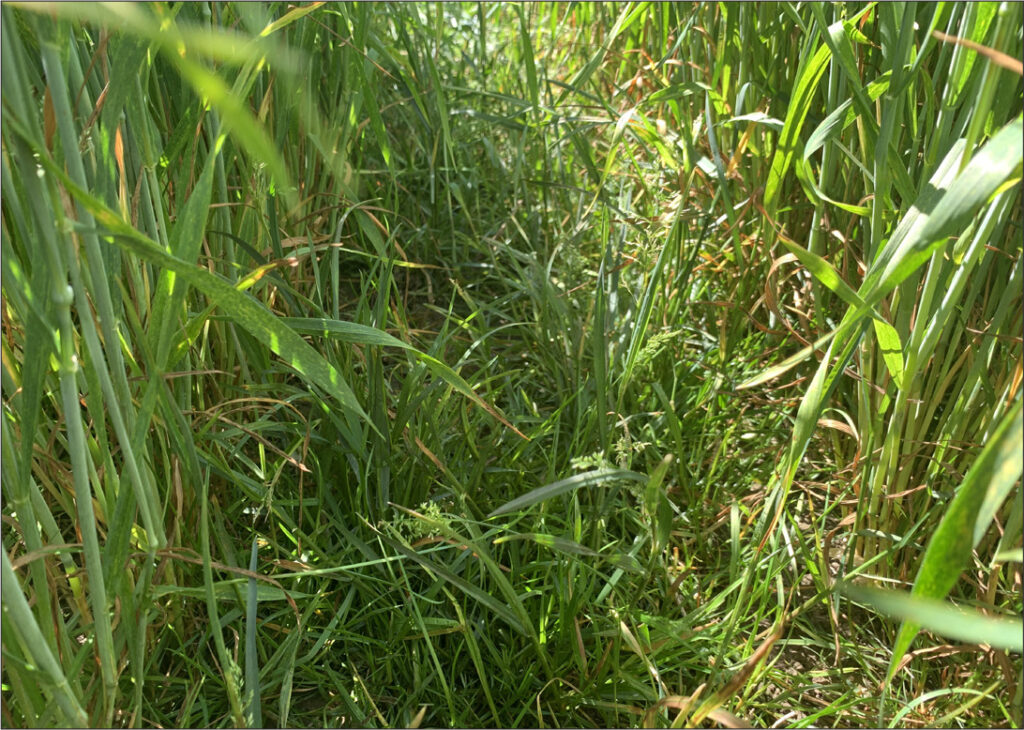
Figure 5. Roughstalk bluegrass under the winter wheat canopy 28 days after a May application to plants >20 cm tall. Application prevented bluegrass from emerging above the crop canopy but didn’t stop flowering

Figure 6. Aerial application of Simplicity GoDRI on May 14 but wasn’t fully primed in spray boom providing unsprayed check to compare the late spring application.
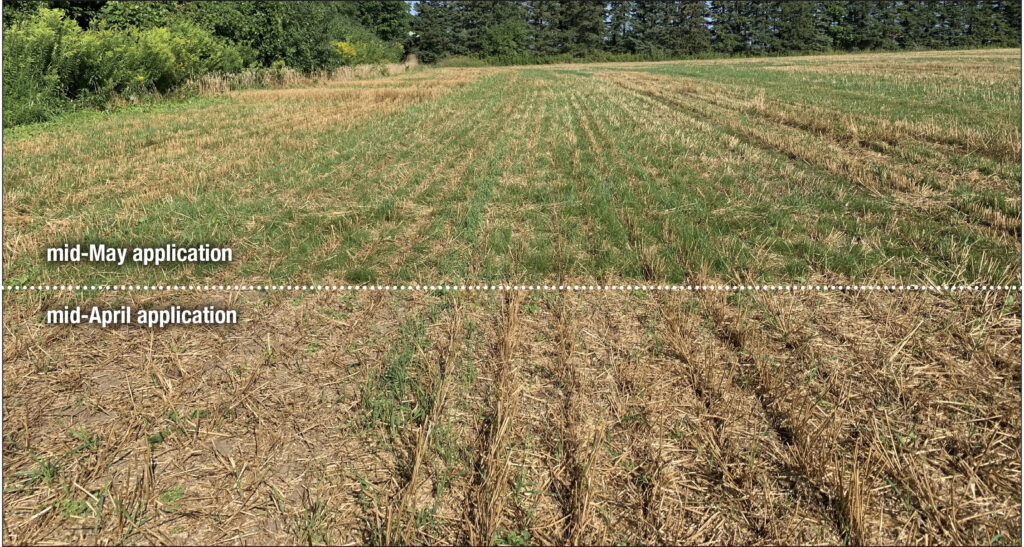
Figure 7. Post harvest, the area sprayed mid-May with large roughstalk bluegrass had considerably more plants compared to area sprayed at the same time on plants <10 cm tall.
Varro herbicide has labelled guidelines that restrict its use when temperatures are below 3°C and/or when winter wheat has reached the first node stage of growth. Both restrictions were violated in this experiment, resulting in slight stunting and significant yellowing. Plants did fully recover within 14 days of application.